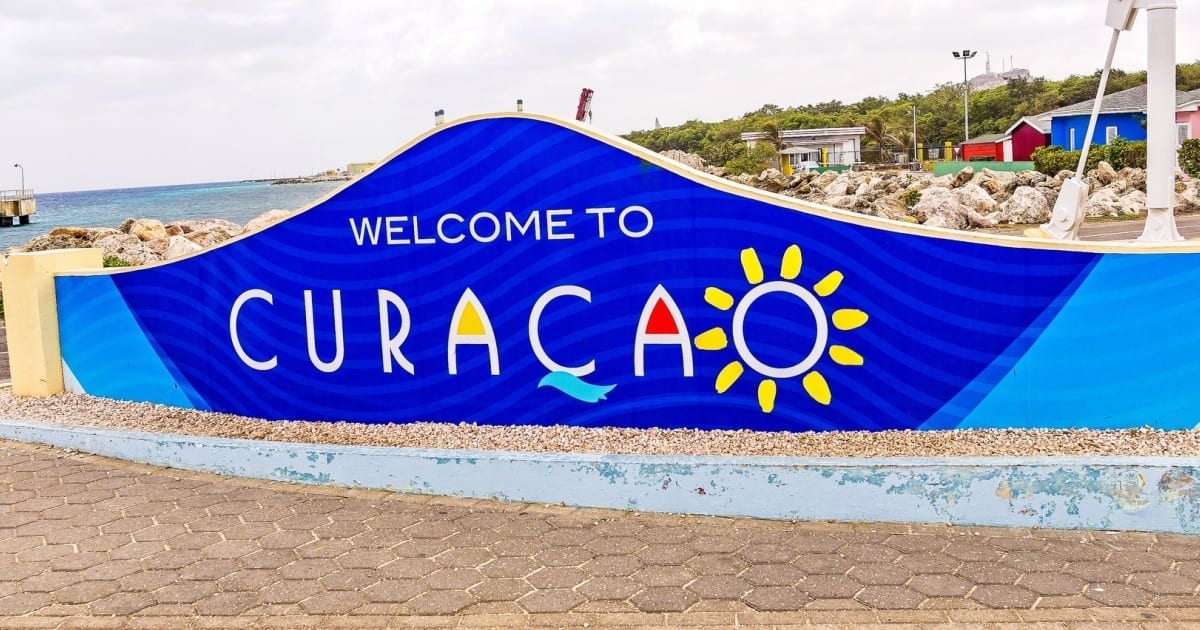If you’re going to Curacao for the first time, you won’t know much more about it than that there’s always great weather and that many Dutch people go here. Of course, there is so much more you need to know if you are going to enjoy a wonderful vacation there. We’ll catch you up!
Curacao, the island
The island of Curacao is an independent country within the Kingdom of the Netherlands. With that, it does have its own government with its own governance, but there are issues (e.g., Finance) where the Netherlands, as a representation of the Kingdom, does look in. Military is also a task organized from within the Kingdom.
Grootte & Ligging
From east to west, Curacao is about 60 km long. From the north to south coast, the length varies between 4 and 14 km. Total area is about 444 km². For comparison, that makes it twice the area of Amsterdam (land + water).
Curacao is located in the southern Caribbean, just about 70 km above Venezuela. Curacao is in the middle of the ABC Islands. To the west lies Aruba about 80 km away, 50 km east of Curacao you will find Bonaire.
The Netherlands is just under 7,900 km from Curacao. With a direct flight, it takes between 9 and 10 hours to fly from Schiphol Airport to Hato Airport on Curacao.
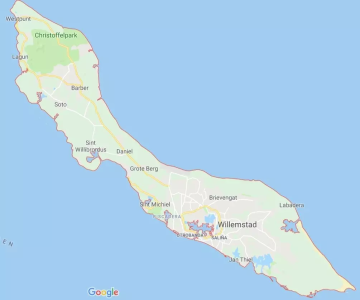

Inwoners
Curacao has about 156,000 inhabitants (reference date Jan. 1. 2020), by far most live in/around Willemstad. Every year about 3,500 people emigrate from the Netherlands to Curacao, but about the same number also go from Curacao to the Netherlands. It is estimated that there are about 15,000 to 20,000 “European Dutchmen” living on Curacao for extended periods of time.
If you look at the background of the people of Curacao, you will see a nice mix of just about all of the world’s population reflected in it. Besides locals and immigrant Europeans, you also see many Chinese (just look at all the Mini-Markets along the road!) and more and more people from South America.
Because of the relatively good situation on Curacao, compared to the bad situation in some of the surrounding countries, there are also quite a few illegal immigrants on Curacao, especially from Venezuela, Dominican Republic and Haiti.
De taal
hello/good morning = bon dia
good afternoon (from 12:00) = bon tardi
good evening (from dusk) = bonochi [pronounced: bonotsji]
how’s it going? = kon ta bai?
Well thank you, and with you? = Bon danki, i ku bo?
May I have the bill please? = Mi por haña e kuenta porfabor?
thank you! = thanki!
Weer & klimaat
The weather in Curacao is really wonderful all year round. The temperature is fairly stable, always around 30 deg. Still, there can be some difference in Curacao’s weather from month to month. Broadly speaking, you can maintain:
- January/February: the “winter” months on Curacao. Occasional chances of a cloudy and/or stormy day, but generally not too hot for the tourists. Don’t worry, the temperature stays nice: even at night it doesn’t get below 20 deg.
- March/April: Spring in Curacao is pleasant weather, though a bit more likely to be quite windy.
- May/June: In terms of weather, perhaps the best time of the year. Not too hot, a nice breeze but not too much: lovely.
- July/August: usually very hot; even locals sometimes find it too hot now.
- September/October/November/December: rainy season in Curacao. Occasional daytime showers, usually short but heavy; half an hour later, bright blue skies again and almost no more wetness on the streets. Occasional prolonged heavy showers also caused some streets to flood. But generally it is still quite tolerable, and such a shower of rain is sometimes quite refreshing.
Delicious all year long!
In short: In terms of climate, you can actually go to Curacao all year round. However, keep a close eye on the tour operators’ rates: in e.g. September through early December, it is often just a bit cheaper than the rest of the year.
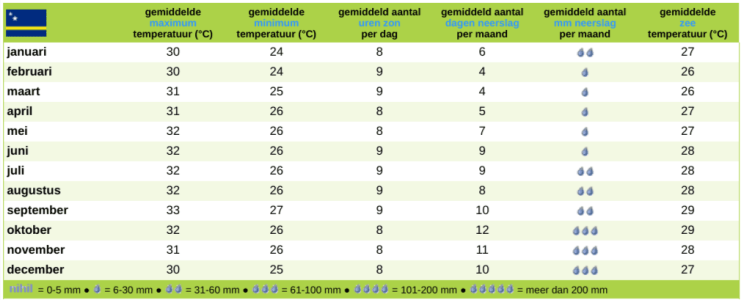

Learn Papiamentu online
If you’re going to Curacao for a little longer than an average vacation, it’s well worth taking an online basic Papiamentu course. A concise course consisting of 10 modules + hefty glossary + bonus material. The big advantage: You can take a class whenever and wherever it suits you, and you can also just share one course with your travel companions! Read along about the Papiamentu e-course.
Curacao for Beginners
Practicalities
Some things are just as handy to know. Not all that hugely exciting, but if you are going to Curacao for the first time, it may be just a little unfamiliar to you.
Reisdocumenten
What are the necessary travel documents to enter Curacao as a tourist? All that is not so challenging;
– A valid passport, valid until the date of departure from Curacao + 1 day
– a DI Card, easily applied for within 7 days before departure
– A return ticket, or at least a ticket that allows you to depart from Curacao again. Curacao instituted this to prevent them from incurring expenses for you in case all your money runs out. Please note that this may be checked upon arrival in Curacao.
All about travel documents for Curacao
Tijd
If it is Summer time in the Netherlands, then it is 6 hours earlier on Curacao (so 16:00 p.m. in the Netherlands is 10:00 a.m. in the morning on Curacao). Because Curacao does not do Winter Time, during Winter Time it is a time difference of only 5 hours (so 16:00 p.m. in the Netherlands is 11:00 in the morning on Curacao).
In Curacao, it is dark relatively early all year round. Every day between 18:00 p.m. and 19:00 p.m. the sun sets, and every morning between 06:00 a.m. and 07:00 a.m. the sun rises again. So you will eat in Curacao mostly in the dark at night.
All about Curacao & Time
Geld
In Curacao, you can pay with the Antillean Guilder, abbreviated the ANG or NAF. Of course, the exchange rate fluctuates somewhat, but as an indication, NAF 2 is a around € 1,-. So any price you see in Guilders must be divided by 2 (plus a little) to determine its value in Euros.
You can use the U.S. Dollar as currency at many (tourist) locations. Because the Antillean Guilder currency is too small to work with for credit card companies, when paying with your credit card, the amount is always converted to US Dollars. Then keep in mind that there will almost always be additional charges of at least 5%.
Arranging cash
If you want to have cash immediately on Curacao, e.g. for the transfer to your accommodation, it is best to arrange cash in advance online through GWK Travelex. You can then pick this up at Schiphol Airport; you’ll pass it on the way to the gate anyway. Handy!
In enough places on Curacao you can withdraw money from the wall. You do pay extra fees for withdrawing with a Dutch debit card. Those fees apply per transaction, regardless of how much you withdraw. So it is more economical to withdraw 1x NAF 600 than 2x NAF 300. In some places you’ll find a “drive-through pin,” sort of like a McDrive but with an ATM. You drive your car tightly in front of the ATM and can withdraw your money directly from the car.
Elektriciteit
Standard power in Curacao is 110V and your European plug won’t fit the socket. But fortunately, there are solutions to this. At many vacation accommodations, 220V will also be available and you can plug your power cord right in. If there are not enough “European outlets”, you can probably ask at the reception desk of your accommodation for adapters so that you can still use the 110V outlets. Just make sure the device is suitable for 110V! Most devices from the Netherlands are suitable for this, but not all of them!
Note that in Curacao the cost of electricity is quite high. Some smaller accommodations (apartments and B&Bs)
Tip: Most accommodations offer only one or a few outlets for a European plug. That can then sometimes be a challenge to leave smartphones, Go Pro, e-readers, etc. on. Bring a power strip so you can charge multiple devices at once.
Water uit de kraan
Always a question when vacationing outside Europe: can you drink the water from the tap? In Curacao, this is no problem at all. It will taste different from what you are used to in the Netherlands because it contains fluorine. But that is not a problem/risk, the tap water in Curacao is safe to drink. Note that if a faucet has not been used for a while then some brown water may come out at first. So when you arrive at your accommodation, let the tap run for a minute before drinking from it.
Inentingen en ziektes
You do not need vaccinations or other protective medication when you go to Curacao. Still, a visit to the pharmacy/drugstore beforehand can be helpful:
Sun protection
It sounds so nice (and it is!) but if you suddenly find yourself exposed to strong sunlight literally all day in Curacao, the chances of getting sunburned are very high. Have you thought about sunscreen? And after sun? For children, a UV shirt (or suit) is very handy.
Also remember your sunglasses, a cap or something similar, and bring a thin, long-sleeved shirt just to be sure. Should you get burned, you can put it on if you still want to get out from under the umbrella.
Mosquitoes
In Curacao, as a tourist, you will undoubtedly be bothered by mosquitoes. In some periods more frequent than in others, but throughout the year there are certainly mosquitoes on Curacao, particularly targeting tourists who have thinner skin than the tanned skin of the locals. We give you all kinds of tips on how to best deal with mosquitoes on Curacao.
Seasickness
Another tip: big chance you will go on an excursion on Curacao with a boat at sea, e.g. Klein Curacao, a day of sea fishing or a Westcoast Trip with catamaran. As the boat heads east, you almost always have the current against you and there is a chance of seasickness. If you are prone to this, then perhaps these wristbands are a solution for you.
Zika, Chikungunya and Dengue
In 2016(Chikungunya) and 2017(Zika), there were epidemics in Curacao that could make you quite sick. Both diseases were spread through one type of mosquito, but as of 2018, Curacao is no longer a high-risk area for these diseases. The same mosquito is also responsible for the spread of Dengue. You can assume that it is safe on Curacao as far as these diseases are concerned, but the viruses will probably always be present on Curacao in a very minimal form. Especially with Zika, there is sometimes doubt among pregnant women whether or not they can go to Curacao, but fortunately the chances of contracting Zika on Curacao are again negligible.
Veiligheid op straat
Generally, it is safe on the streets of Curacao. Of course, like e.g. in Amsterdam or Rotterdam, you should not walk in the wrong streets or neighborhoods. If you do not walk around overly obviously as a tourist “with money” and use common sense, there is little to worry about.
Some tips:
- NEVER leave anything of value in your car. Especially in the parking lots where the tourists come (near the beaches, in Punda or Otrabanda, etc.) car break-ins are unfortunately frequent.
- If at all possible, after dark just take the car (cab) and don’t go out too much walking outside the areas where it is pleasantly crowded. It really can be a difference from one street to the next between safe or not safe.
- Inside the accommodations it is usually safe of course. But still use a safe if you have one in your (hotel) room.
- Even at the beach, there is a chance that someone will take your stuff if you all dive into the sea at the same time. Some beaches have security guards walking around, but that is no guarantee that nothing will happen.
- There is really no reason to neurotically constantly look around for “scum,” but stay alert. Especially when walking around tourist areas, you just have to watch your stuff. As you probably would if you were shopping in the center of a major city in the your own country on a busy Saturday afternoon.
Of course, things can always happen, but by just being a little careful where you go you will soon avoid misery. We have never felt unsafe in Curacao!
From A to B
Of course, during your vacation, you’ll want to see a bit more of the island than just your accommodations. But how do you get from A to B?
Vliegtickets Curacao
KLM and TUI
To go (from the Netherlands) to Curacao, you don’t have very many choices. That makes it easy on the one hand, but on the other hand, there is really no way to “sneak” a bargain ticket somewhere. A direct flight is actually only possible from Schiphol Amsterdam Airport. In the past there used to be (and possibly again in the near future) a direct flight from Germany to Curacao, or you could fly inexpensively from Brussels (via Amsterdam), but those options are currently (early 2021) out of the question.
TUI and KLM are the two airlines offering Curacao as a destination, with both having at least one plane heading that way (and back) daily.
Flight times
Usually the flight departs in the morning (early afternoon at the latest) from Amsterdam and, on a direct flight, you will arrive in Curacao mid-afternoon (local time). The return flight from Curacao usually leaves late afternoon to mid-evening, arriving at Schiphol the next morning usually between 07:00 and 11:00 a.m.
TUI in particular regularly combines their round trip Amsterdam-Curacao-Amsterdam route with a stopover on one of the other Dutch Caribbean islands (Aruba, Bonaire, St. Maarten). Usually this means a delay of about an hour on either the way there or the way back.
Ticket prices
On average, a ticket to Curacao costs about €700 (return, Economy). But that’s still without checked baggage at both KLM and TUI. Please note that this fare is an average, and the fare you have to pay for a ticket may differ from this by several hundred euros per person. Because Curacao is a very popular destination during school vacations in the Netherlands and the Carnival period, you will see ticket prices of €1,100 or more for that period. On the other hand, TUI and KLM both run long-term promotional fares 2-3 times a year. With the TUI Ticket Sale or the KLM World Deal Weeks, you can score tickets from 429 to 499.
Last Minute?
Waiting for a cheap Last Minute actually makes no sense with single tickets: just assume the planes to Curacao are full every day. A Last Minute can still be interesting if you take a package trip, that is, in combination with accommodation.
Alles met de auto
Walking or biking somewhere is something you won’t actually see on Curacao. Simply because it is too hot for such physical exertion (combined with the humidity). In addition, Curacao’s infrastructure is not really designed for cyclists and pedestrians. On the side of the road there is usually no suitable space for pedestrian or bicycle path. And cycling on the road between cars can be dangerous: most motorists do not take them into account (e.g., when turning onto a side street).
You may also notice it among the locals: if they need to go a little farther than their neighbors, they quickly grab the car. So if you want to get a little further than your accommodation yourself, arrange a rental car. Fortunately, there is a wide range of rental cars on Curacao, so you can rent a car that is safe and well insured for as little as about €30 or US$ 32 a day. Also make sure you choose a rental car with air conditioning! You will really need that, driving with the window open will not provide sufficient cooling.
Openbaar vervoer
Public transportation in Curacao is very limited. Trains or trams don’t exist. There are two types of buses:
Convoy
The big buses don’t really run on an exact time. Especially if you want to take the bus outside Willemstad, you won’t have to have a tight schedule. Besides, most bus stops are nothing more than a pole in the ground, with no bus shelter where you can wait out of the sun. So not really recommended, but the possibility is certainly there.
Cab vans
The 8-passenger vans are often used as cabs in Curacao, recognizable by the “T” in the license plate. Such vans can be stopped anywhere on the street to get in or out. Doesn’t cost much, but it’s also not the most convenient transportation. After all, you don’t know in advance exactly how the route is going to be. Behind the front window of the van you can see roughly the starting and ending points in terms of neighborhood, but how the ride goes depends on the people in the van and exactly where they need to be. So especially if you have to be somewhere at a certain time, you better not take this cab van. A normal 20-minute car ride can easily add up to 2 hours or longer with these cab vans.
So it is fair to say that Public Transportation is actually inadequate for tourists.
Scooter huren
Renting a scooter on Curacao is certainly a possibility, but it is not done much compared to renting a car. The reason for this is, among other things, that you obviously do not have air conditioning on a scooter, but also that the roads on Curacao are not everywhere ideally equipped for scooters. But if you don’t have a license for a car, or you won’t be driving long distances in Curacao that require a car, then a scooter is definitely recommended. Note: do put on a helmet, which is mandatory in Curacao. And especially after dark, be extra careful; many car drivers do not take scooters into account.
Taxi
Of course, Curacao is also a great place to rent a cab to get from A to B. You can find a cab on the street near the tourist crowds (including next to the Riffort in Otrabanda), but it’s more convenient to call a reliable cab (or via Whatsapp at +5999-519 0319). Curacao’s legal cabs all operate at legally established rates and meet a variety of strict requirements for safety and quality. You can also come across an illegal cab on the street, but beware: especially if the driver realize that you are unknown on the island, there is a good chance that you will make an overly long ride and/or pay way too much. And in terms of security, insurance, etc., that won’t be well regulated either.
Transfer Hato Airport
Did you not book a transfer from Hato Airport to your accommodation? Then it is advisable to make arrangements for this in advance. Especially if you’re traveling with several people + hefty suitcases, it often won’t fit in a standard (large) passenger car and you’ll need a mini-van. Of course there are some, but there are not dozens of them waiting for you when you walk out of the Arrivals Hall at Hato. Then often the only solution is to take several cabs or share a van with other tourists who had also not yet made arrangements. It can be done, but it’s not really a nice relaxing start to your vacation.
Our advice: arrange your transfer with Norwin in advance. Reliable, customer friendly and a great bus.
What to do
Really just sitting by the pool at your accommodation also gets a bit boring, but what is there to do on Curacao?
De stranden
One of the main reasons to spend your vacation in Curacao is, of course, the beautiful weather. And so you will no doubt have planned to visit the beach regularly.
Curacao has about 40 beaches, large and small, equipped with all kinds of facilities or still virtually unknown to tourists. So there is something for everyone. If you want to enjoy yourself among the tourists with all kinds of restaurants and shops nearby, take a day trip to Jan Thiel, Mambo Beach or Pirate Bay. But the really beautiful beaches can be found west of Willemstad. Popular among locals include Playa Porto Marie, Cas Abou, Lagun and Daaibooi. Also consider this if you go on the weekend or on a National holiday: when the locals are off, they will naturally go to enjoy the beaches and it is considerably busier. But cozy! Often “the locals” bring a nice local music (no annoying noise) and will usually light the BBQ as well. Have a friendly chat with them and who knows, you might be invited to join them for a chicken leg!
North vs. south coast
Almost all of Curacao’s walkable beaches can be found on the south/west side of the island. This is mainly because on the northern side of Curacao, the currents of the Caribbean Sea hit the coast with full “force. There is only one beach on the north side of Curacao: Playa Kanoa. This is not really a beach for the average tourist either, if only because of the cadaver smell when you drive among all the illegal garbage dumps on the way there. Playa Kanoa is mainly a place for surfers, who want to take advantage of the big waves. Furthermore, the north coast is not a beach to relax and take a refreshing dip. However, at Shete Boka National Park you can take a look at the enormous force with which the sea here slaps the shore.
On the south side, you have the mainland of South America about 70 km away, so in that relatively narrow passage there are not tremendously strong currents that would make the beaches inaccessible.
Beaches of Banda Abou
The area west of Willemstad is also called Banda Abou, say “the countryside” of Curacao. Here you will find the most beautiful beaches of Curacao. Would you also like to have a wonderful day at one of these smaller beaches? There is plenty to choose from! Drive your rental car from Willemstad via the Weg Naar Westpunt to Banda Abou. If you turn left at the level of just past Harmony and Big Mountain you are on the Road to St. Louis. Willibrordus, and at St. Willibrordus you get a fork: turn left toward Daaibooi and Porto Marie, or turn right toward Soto. If you take the road towards Soto, and keep going straight, every few hundred meters (or few km) you will get another beautiful beach on your left. Some beaches you have to pay for (e.g. Cas Abou), but most beaches are accessible for free.
Sightseeing
Of course you must have seen something of Curacao, more than only your accommodation and the beach. There are several good options for this:
Taking a walk around by yourself
It is in itself quite doable to walk past the most famous locations of Curacao by yourself. Handelskade, Pontjesbrug, Riffort, Fort Amsterdam, Marshe Bieu, they are all just a few hundred meters from each other. Take a nice walk around the famous neighborhoods of Punda, Otrabanda and Pietermaai. Fine to enjoy yourself for half a day!
Guided city tour
If you also want to get to the locations that the average tourist doesn’t casually visit, sign up for a city tour. With guide Jacqueline, one of Curacao’s few officially certified guides, take the walk through Scharloo or through Otrabanda and see the beautiful stately old buildings, the beautiful murals and the cute backstreets. Meanwhile, Jacqueline tells plenty about the history of the neighborhood and you can go inside some neighborhood residents with her.
Discover Curacao bus tour
If you really want to see all the beautiful things of Curacao in one day, book the Discover Curacao bus tour. This is the only bus tour that really shows all of the island from east to west in one day. From the Blue Curacao factory to the beautiful wilderness at Shete Boka. From the high Juliana Bridge to the beaches in Banda Abou, you’re going to see it all with the Discover Curacao bus tour.
Climb the Christoffelberg
For sporty vacationers, there is a great challenge on Curacao: climb the Christoffelberg! This mountain, the highest in all of the Kingdom of the Netherlands, has its summit at 375 meters. above sea level. The climb up takes about an hour and a half and is quite tough for the average tourist in good shape. The toughness comes mainly from the conditions: it’s hot, and you’re running right through nature. So no tight paved path, but you walk from rock to step, around a tree, etc.
Read our blog about our climb.
If you want to climb the Christoffelberg, keep in mind that you are not allowed to start the climb after 10:00 a.m. This is because of the climate; it gets too hot later in the day to exert yourself so much. To climb the mountain, you must purchase an admission ticket to Christoffel Park.
Excursies
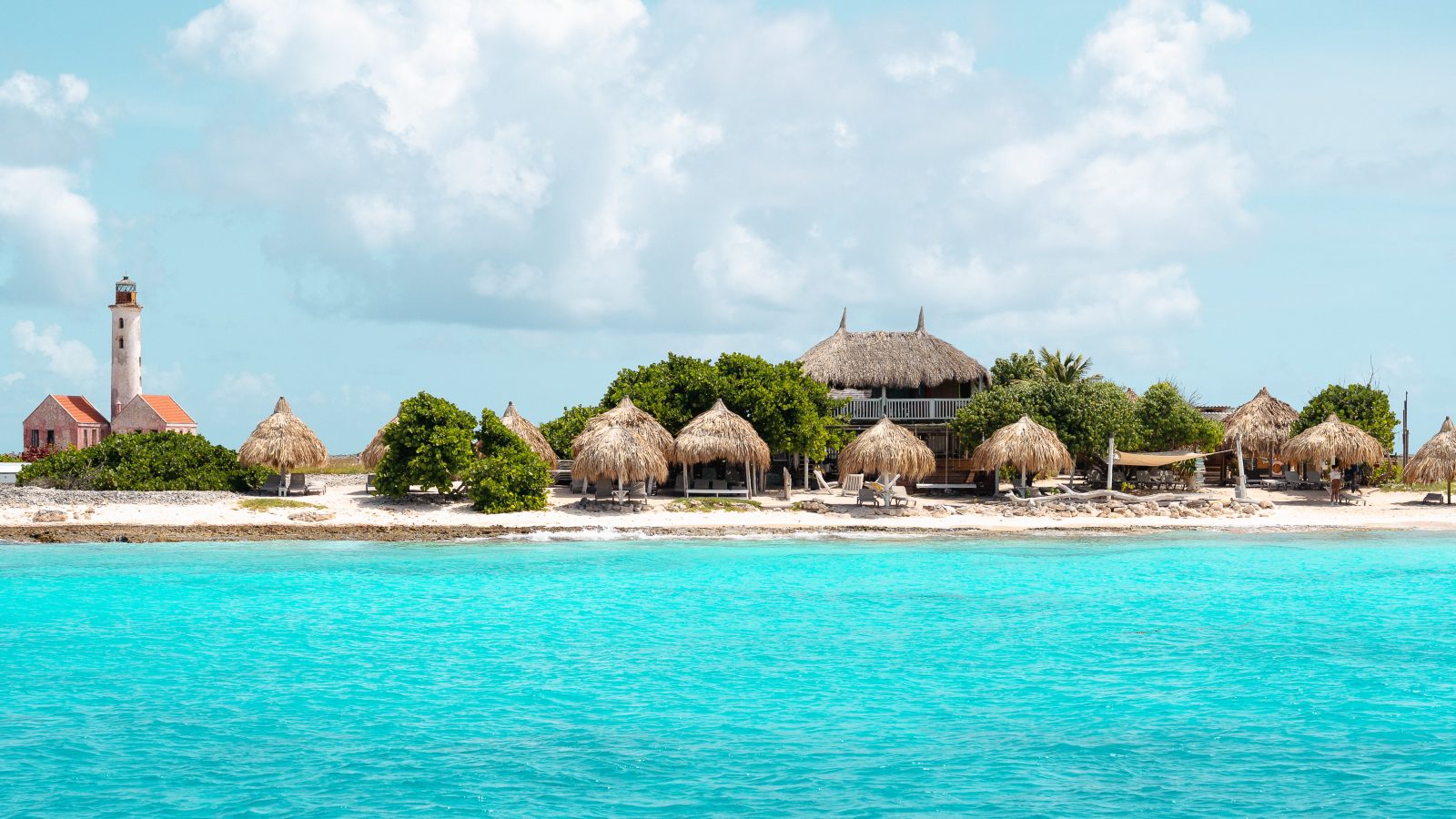

Beachhouse with sunbeds
Klein Curacao | Miss Ann
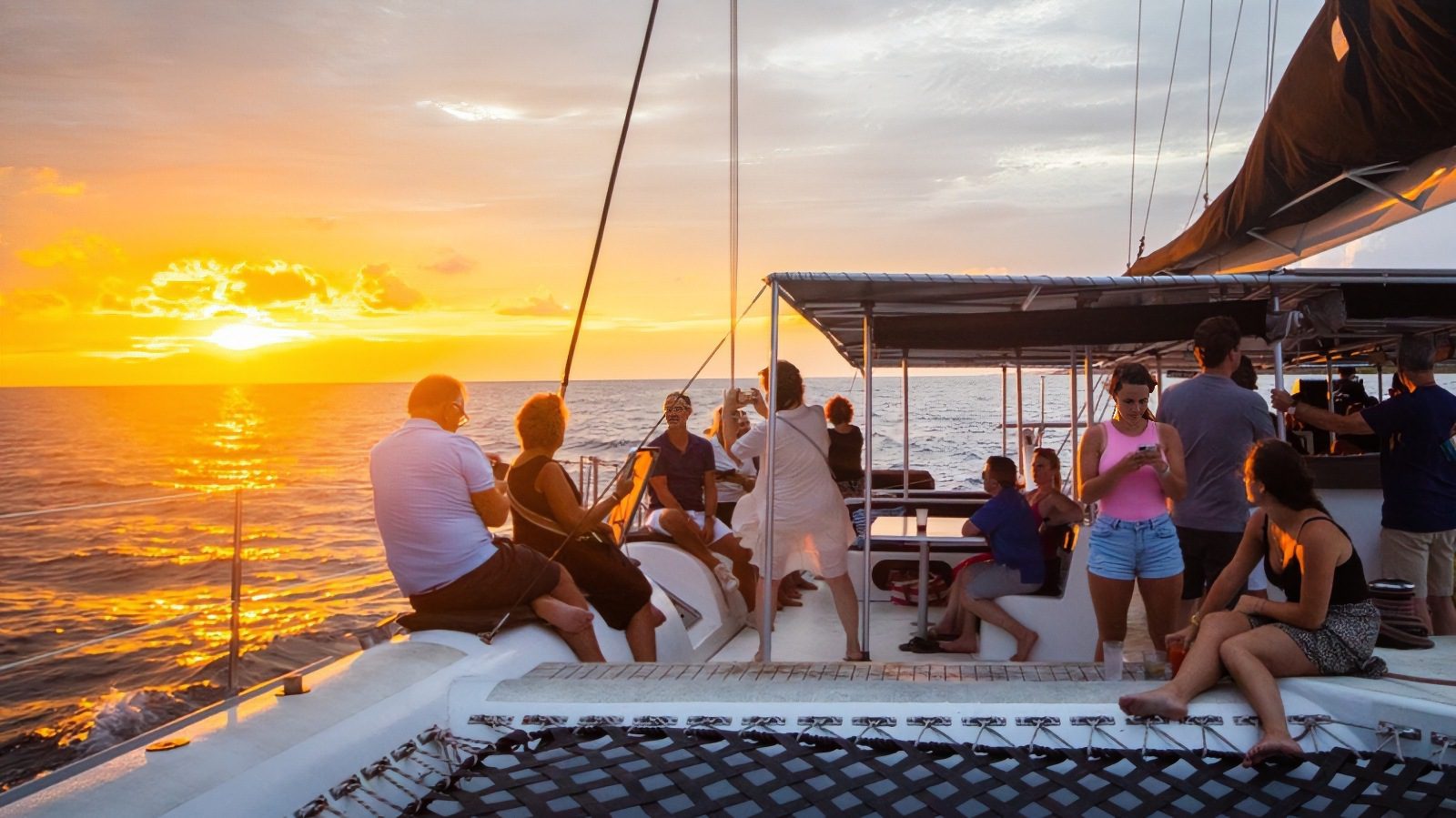

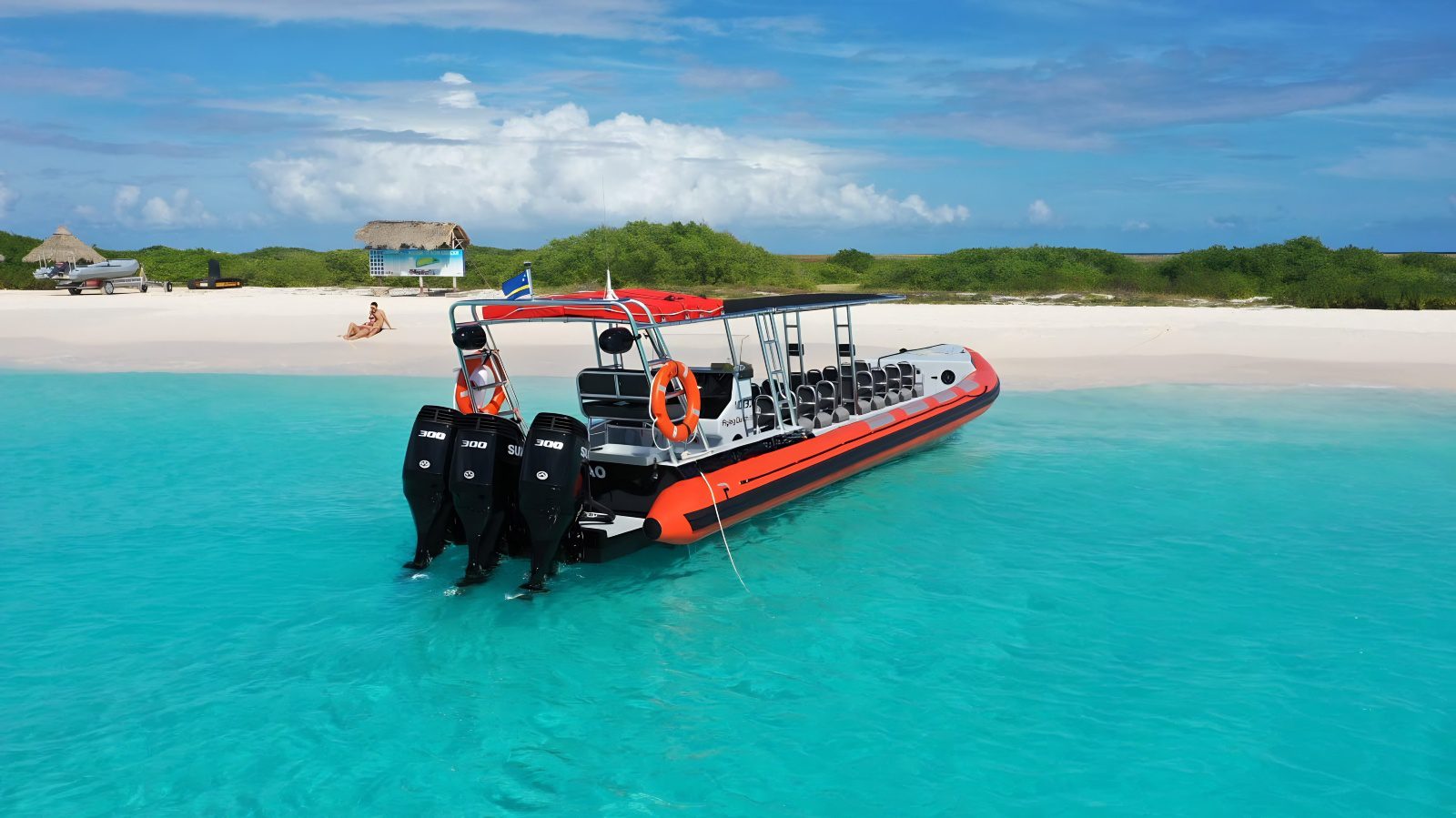

Avoid seasickness
Klein Curacao | Powerboat
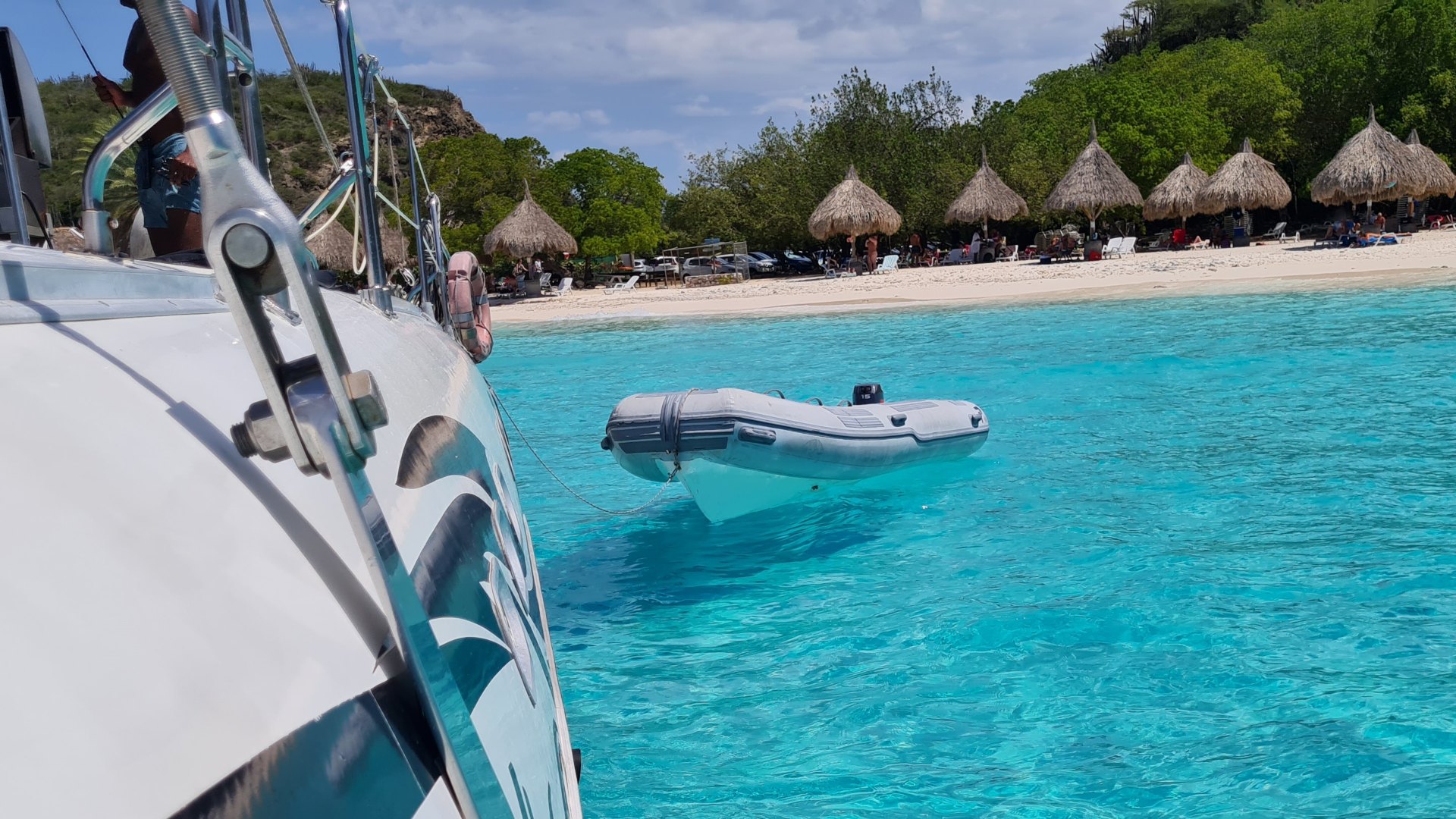

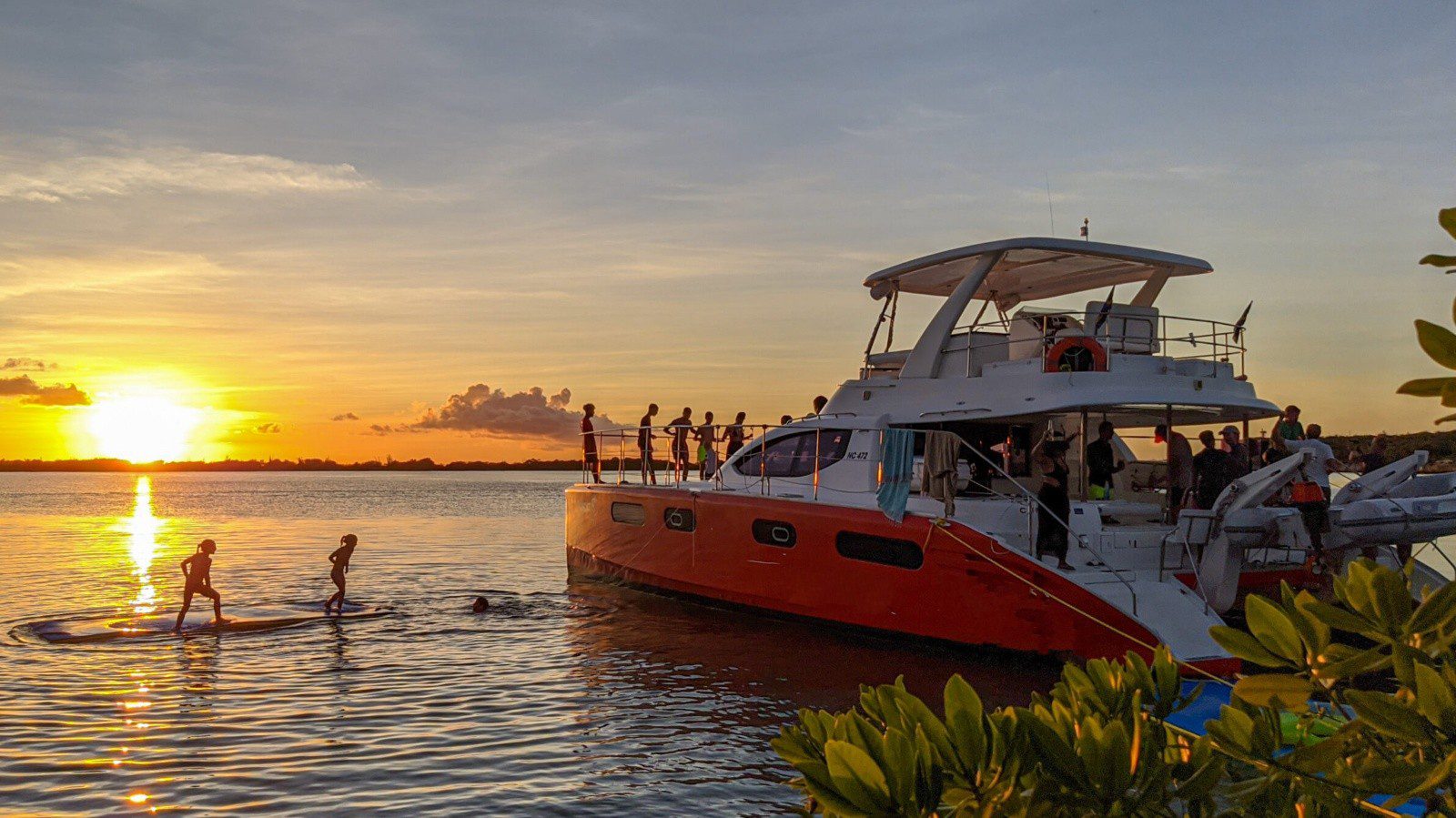

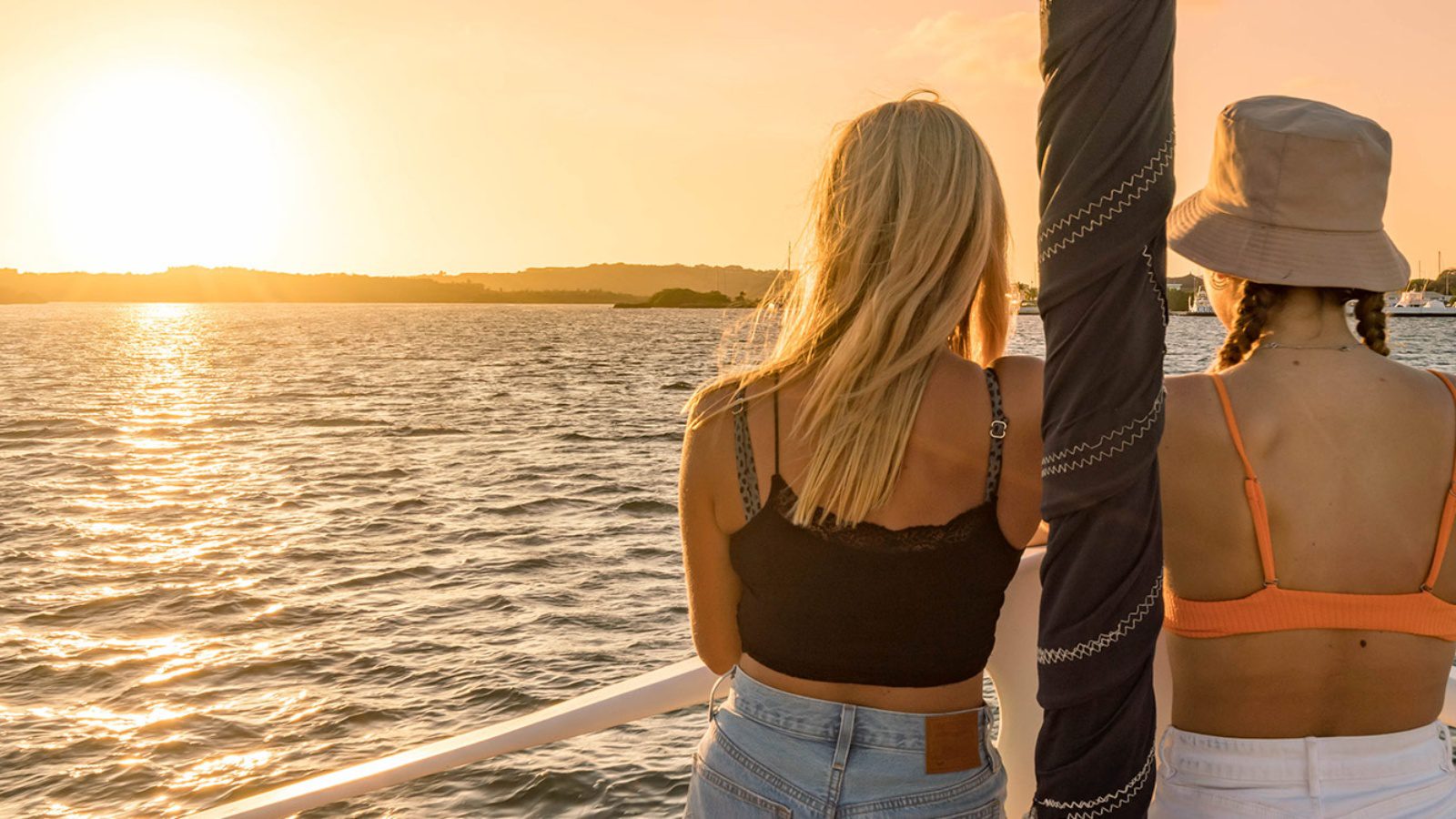

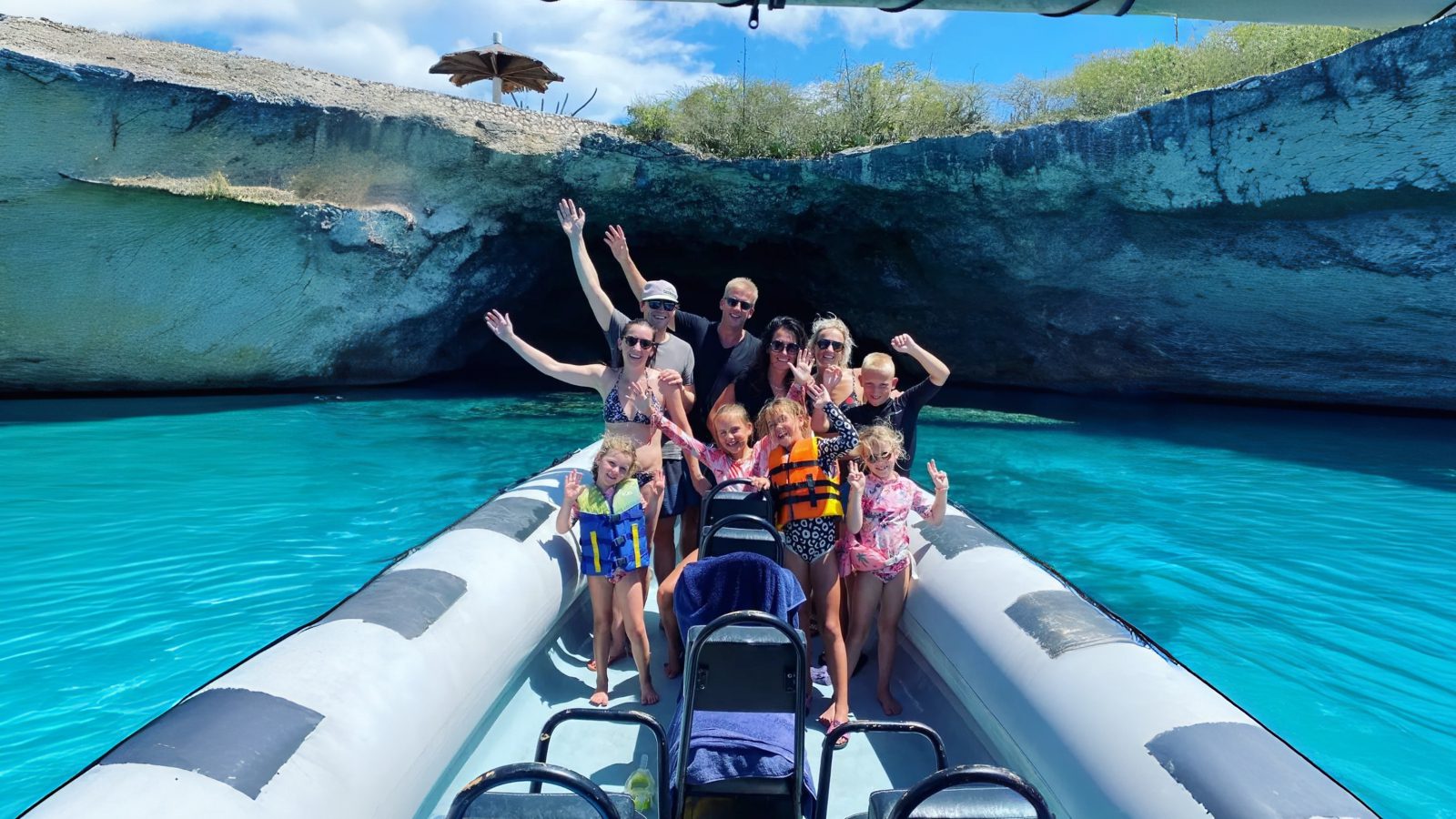

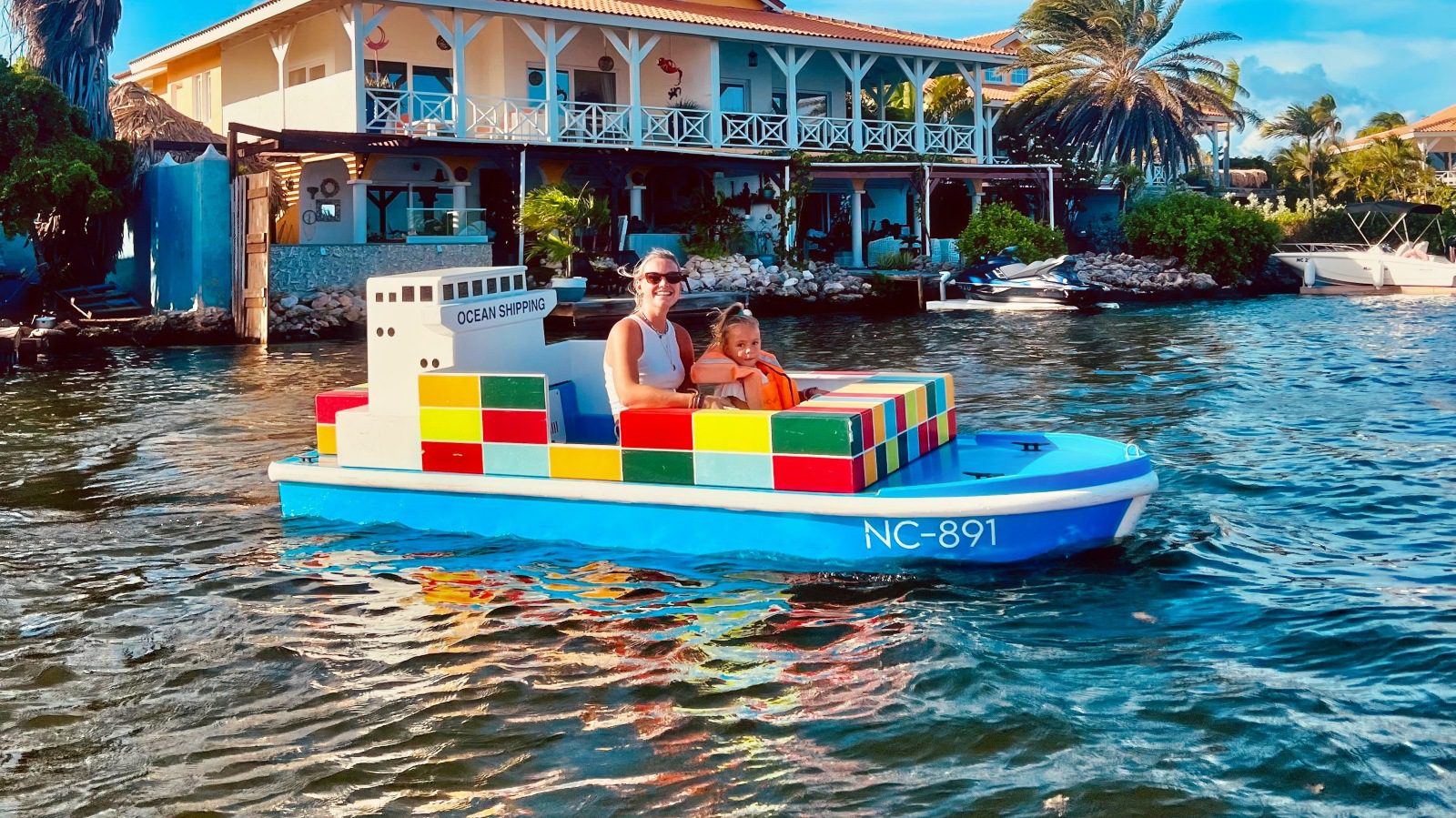

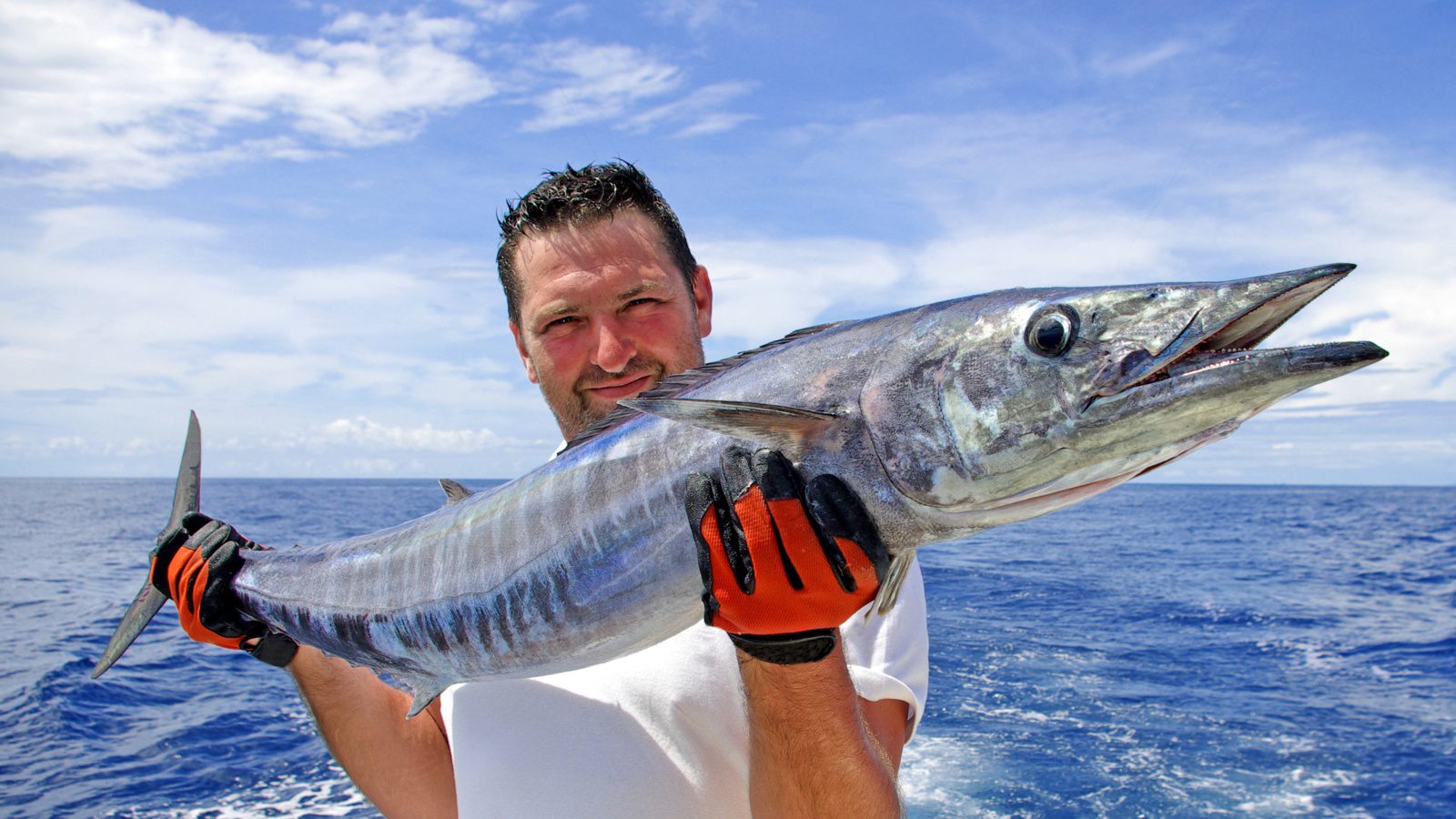

Hospitality
Surely you also want to visit a terrace, have a nice dinner out or party at a popular bar?
Restaurants
On a tourist island like Curacao, you can of course find plenty of restaurants to enjoy delicious food. There are plenty of cuisines to choose from, from grill/bbq to vegan, from Asian to Dutch cuisine, from lobster to croquette.
No idea yet?
Want to just walk around and step inside where it’s nice and busy and the menu appeals to you? There are a few locations where you have several restaurants sitting close together. For this, go e.g. to the tourist beaches at Jan Thiel or Mambo Beach, or go into the (tourist) center and find something in Pietermaai or around Wilhelminaplein/De Boogjes.
Worth the effort!
Of course, Curacao also has some restaurants that are really worth going to especially. For this, check out our Top 5.
Food along the road
On Curacao, it is fairly common -among locals- to stop somewhere along the road for a quick bite to eat. You quickly recognize them: a somewhat simple container or cart, but don’t let that affect you negatively. At such so-called Truk’i pan, you can often get really delicious food! Most offer mostly bbq/grill dishes, to eat on the spot or take away.
You will also see a fast food restaurant every few kilometers on Curacao. McDonald’s, Burger King, KFC, Subway, Wendy’s are full of them, but a familiar Dutch snack bar can also be found in Curacao.
Happy Hour
On Curacao, you can visit a Happy Hour somewhere every day for a cozy (and inexpensive!) drink. It is mainly the bars on the beaches that organize a Happy Hour, to “stick around” for an hour after a wonderful day at the beach. The nice thing about most Happy Hours is that you always see a nice mix of the tourists and the people who live on the island. Therefore, this is the ideal place to “socialize” and meet new people. A few familiar, and therefore cozy, Happy Hours:
- Dive City (Pietermaai, city beach next to Scuba Lodge) – Thursday 5 p.m.
- Wet & Wild (Mambo Beach) – Friday 8 p.m.
- Chill (Mambo Beach) – Friday 5 p.m.
- Zanzibar (Jan Thiel Beach)- Saturday, 5 p.m.
For your information, Happy Hours are almost always “2 drinks for the price of 1,” do indeed last an hour but the party usually goes on for longer.
The place to be
Jan Thiel Beach & Mambo Beach Boulevard
The bars and restaurants at Jan Thiel Beach are a certainty in the middle of Curacao’s busiest tourist area. Here you will always find crowds and fun. Mambo Beach Boulevard also has plenty of fun every day. Both are locations, though, where it gets quieter quickly from about 10 p.m. onward.
Wilhelmina Square
Wilhelminaplein is also a very popular location with several restaurants and terraces where you are always among the people.
Pietermaai
If you’re really looking for the places to grab a terrace late at night, then Pietermaai is the place to be. The Nieuwestraat in particular is bustling every night, where you are sure to see locals (and interns).
What is still missing?
No doubt this page will not be complete, and you know of something else that should be added. Please let us know!

